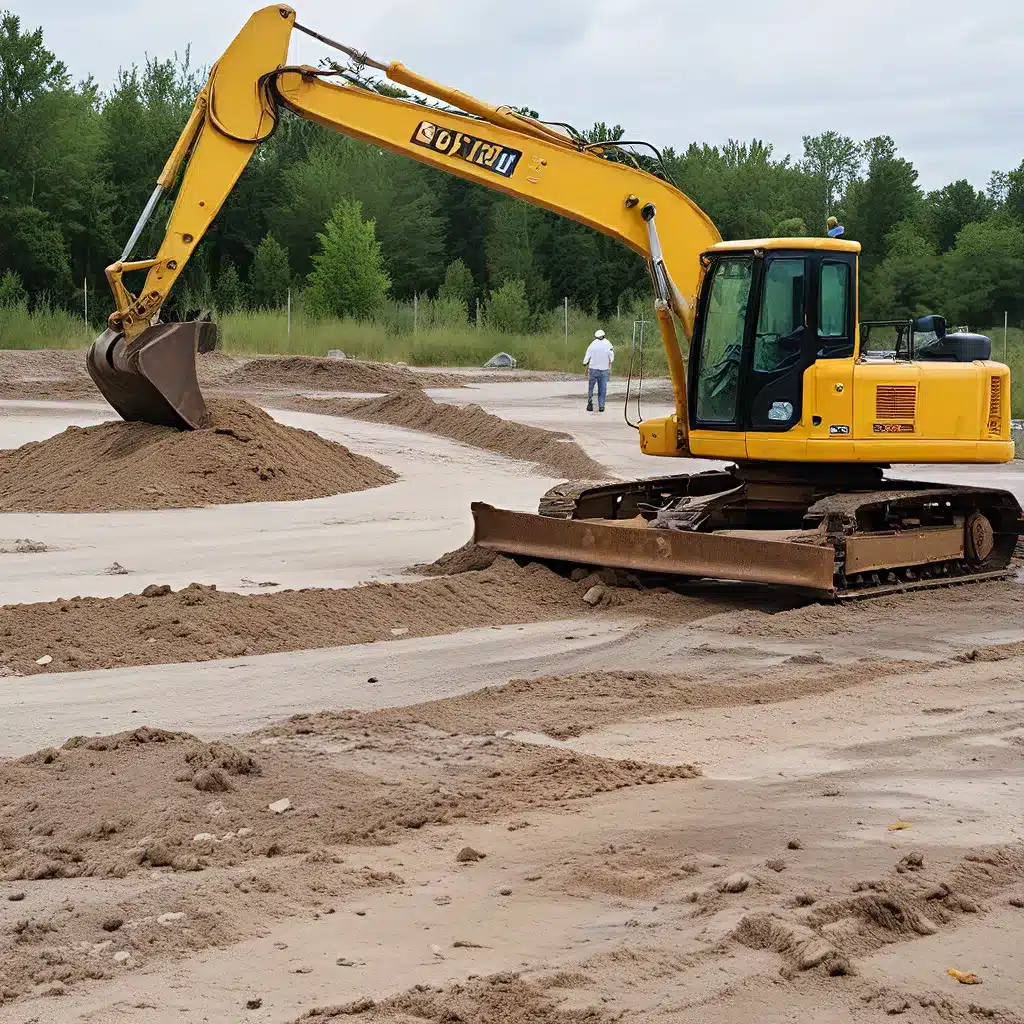
The Messy Underbelly of Our Beloved Landscapes
Picture this: you’re strolling through a picturesque park, admiring the lush greenery and the babbling brook that winds its way through the scenery. It’s the epitome of natural beauty – or so it seems. But lurking beneath the surface, unseen by the naked eye, could be a hidden threat – a legacy of past contamination that threatens the health of the local community and the delicate ecosystem.
As an environmental services professional, I’ve seen this scenario play out all too often. Contaminated sites can range from abandoned industrial facilities to old gas stations, each with their own unique set of challenges. And trust me, dealing with these hidden hazards is no walk in the park (pun intended).
Unraveling the Complexities of Site Remediation
In the world of environmental cleanup, there’s no one-size-fits-all solution. Each site is like a unique puzzle, with its own intricate pieces that need to be carefully assembled. That’s why developing a comprehensive high-resolution site characterization (HRSC) is the cornerstone of any successful remediation effort.
HRSC is all about getting to the heart of the problem – literally. By using advanced technologies and techniques, we can map out the extent and distribution of contaminants with a level of detail that was once unimaginable. This detailed data allows us to precisely target the areas that need the most attention, saving time, money, and resources in the long run.
But HRSC is just the beginning. Once we’ve got a clear picture of the problem, it’s time to dive into the nitty-gritty of remediation strategies. Here’s where things can get really interesting (and sometimes a bit messy).
Navigating the Toolbox of Remediation Techniques
When it comes to cleaning up contaminated sites, we environmental professionals have a veritable toolbox of techniques at our disposal. From soil and groundwater remediation methods to innovative in-situ treatment technologies, the options are as diverse as the sites we work on.
Take, for example, the case of an old gas station with a leaking underground storage tank. The Fehr Graham team might start by carefully excavating the contaminated soil and using techniques like soil vapor extraction or dual-phase extraction to remove the harmful compounds. Meanwhile, they might employ groundwater remediation methods like pump-and-treat systems or in-situ chemical oxidation to address the contaminated aquifer.
But the story doesn’t end there. Once the initial cleanup is complete, the team needs to ensure the site is safe for its intended use – whether that’s a new park, a residential development, or something else entirely. That’s where the concept of best management practices (BMPs) comes into play.
Embracing Best Management Practices for a Greener Future
The EPA’s BMPs are all about minimizing the environmental impact of remediation activities. It’s a way to ensure that the cure doesn’t become worse than the disease, so to speak.
For example, let’s say the remediation process involves a lot of heavy machinery and energy-intensive treatment methods. The BMP approach would encourage the use of renewable energy sources, efficient equipment, and strategies to reduce the project’s carbon footprint. It’s about taking a holistic view and considering the long-term sustainability of the cleanup.
But BMPs aren’t just about greening the process – they’re also about ensuring the continued safety and wellbeing of the community. By partnering with local stakeholders and regulatory authorities, we can develop remediation plans that address the unique needs and concerns of the people who will be living, working, or playing on the site once the cleanup is complete.
Overcoming Obstacles and Embracing Innovation
Of course, no site remediation project is without its challenges. Whether it’s dealing with complex subsurface conditions, navigating regulatory hurdles, or securing the necessary funding, there’s always something to keep us on our toes.
But that’s where the true magic of our profession shines through. As environmental experts, we’re constantly pushing the boundaries of what’s possible, exploring new technologies and techniques that can help us tackle even the toughest cleanup challenges.
Take, for instance, the advancements in high-resolution site characterization. By combining cutting-edge geophysical tools, real-time data analysis, and innovative visualization software, we can now map out the subsurface in unprecedented detail. This level of understanding allows us to develop more targeted and effective remediation strategies, ultimately saving time, money, and resources.
And the innovation doesn’t stop there. From in-situ treatment methods that harness the power of nature to tackle contaminants, to advanced soil and groundwater remediation techniques, the environmental field is constantly evolving. It’s an exciting time to be in this line of work, where every new challenge is an opportunity to push the boundaries of what’s possible.
Embracing the Journey of Site Remediation
As I reflect on my career in environmental services, I’m reminded that site remediation is never a simple or straightforward endeavor. It’s a complex, multifaceted process that requires a deep understanding of the site, the contaminants, and the surrounding community.
But the true reward comes when we’re able to transform a once-contaminated site into a vibrant, healthy space that the community can enjoy. Whether it’s a revitalized park, a new housing development, or a thriving commercial center, the impact of our work can be truly transformative.
So, if you’re ever strolling through a beautiful landscape and find yourself wondering about what lies beneath the surface, remember that there are dedicated teams of environmental professionals working hard to uncover and address those hidden hazards. It’s a challenge we embrace with passion, creativity, and a steadfast commitment to creating a cleaner, safer world.
And who knows, maybe one day you’ll be the one walking through a newly remediated site, marveling at the beauty and the stories it has to tell. After all, every cleanup project is a journey, and we’re all in this together – Inland Waters Inc. and the communities we serve.


